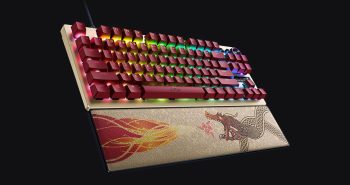Vienna-based developer Vertex4’s ‘SunAge’ is a real-time strategy game set in a world where the aftermath of a nuclear war has forced humans into protective domes while those outside either died or mutated into the ‘Raak-Zun’, the game’s ‘evil’ mutant faction. Those that stayed in the domes are known as the ‘Federals’. Much like the winning number of people in a ‘boy band’ is five, the winning number of factions in an RTS seems to be three. In keeping with this tradition, a third alien robot faction is thrown into the mix as well.
Graphics: SunAge is played in a 2D world from an isometric viewpoint, similar to the RTS games of the mid 1990s. In fact, the whole visual style of the game echoes back to that generation of RTS games. The background seems straight out of Fallout 2 (and that is a compliment), albeit much higher resolution. The units are very well detailed 2D sprites and they animate smoothly to boot. The game is not entirely two-dimensional however, as some of the game’s effects are done in 3D and, as they are the only three-dimensional elements in the game, really stand out over the background art.
Gameplay: The game’s campaign starts with a couple of missions which teach the player the ropes of command while setting up the story to follow. Cut scenes are featured at the beginning of every mission and sometimes are dispersed during a mission as well. They are done in a 2D comic-book panel style which, while maligned by some critics, I actually thought we a nice change from full-motion video. While I appreciated this change, I felt the artwork was often a bit dull.
Controlling your units is generally a smooth experience. Once you click on a controllable group of units, a blue circle encompasses your mouse cursor. This denotes the currently selected group’s weapons range (a very handy feature). In addition, by right-clicking and dragging on a location you can change your group’s formation and facing direction. Unit AI seems relatively intelligent as far as target selection is concerned. Infantry will try to attack other infantry and soft targets before turning to heavy units while heavy units tend to attack other comparable units before turning to soft targets. By right-clicking an enemy, you tell your group to make that type of target their highest priority. They will still attack other targets as needed, however, to survive. This really gives you the feeling of giving orders to your troops. You tell them to go to a location, form up, and they will handle the rest. A ‘feature’ of the game doesn’t always work as planned is that right-clicking and dragging will not select multiple unit types. They do this to help the player avoid selecting unwanted units. However, in a scramble situation when you need to throw alot of units somewhere fast, it is a bit of a pain. In addition, most units have a secondary mode which can be toggled on and off. For infantry, they become snipers. These dual-functions expand a unit’s flexibility and a nice addition.
Your construction projects are fueled by natural resources which have to be mined from around the map. The resources in SunAge come in four flavors: Nitrium Ore, Plutonium, Zirkonium, and Iberium Rods. Each are used in different applications. For instance, building light vehicles requires not only Nitrium Ore, the most common resource, but also a quantity of Plutonium. Capturing and controlling the ‘mines’ where these resources are gathered is of vital importance, as is defending them. The concept of resource gathering may not be very mainstream anymore, when looking at titles such as World in Conflict, but in this case the natural resources add an additional layer of planning to the battlefield.
Base planning and construction will be a big part of your game in SunAge. You will need to instruct your builder units to construct power distribution networks to feed energy to your future buildings. An improperly planned base layout can cost valuable resources and time later on in the game. Base defenses are also extremely important in SunAge, as the constructible defenses in this title are actually viable in combat, unlike many other RTS games where they limit the number of turrets you can create.
It seems to us that in SunAge, the developers wanted to create something where strategy was of the utmost important. Where ‘Zerging’ was disapproved of and players were meant to gather resources, fortify their bases, and then send their armies to duke it out. We feel they succeeded in their efforts.
Sound: The sound design in SunAge is adequately executed. While nothing extraordinary it serves the title well. The voice acting in the cut scenes leaves something to be desired. It is often a bit over-the-top and unbelievable which, unfortunately, only serves to bring down their quality.
Score: SunAge features an orchestral score that appropriately sets the mood depending on which side you are playing as.
Conclusion: While SunAge features nicely detailed 2D art assets, it looks somewhat dated when compared to modern RTS games. However, upon closer inspection you will find a very fun game that holds strategic thinking in the highest regard and offers a large amount of flexibility in its base building and unit usage. It is the kind of small release that the ‘big’ companies out there ought to take note of and learn from.




